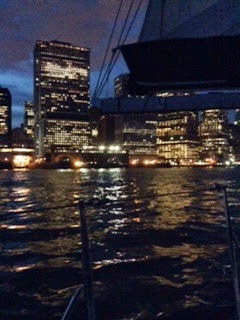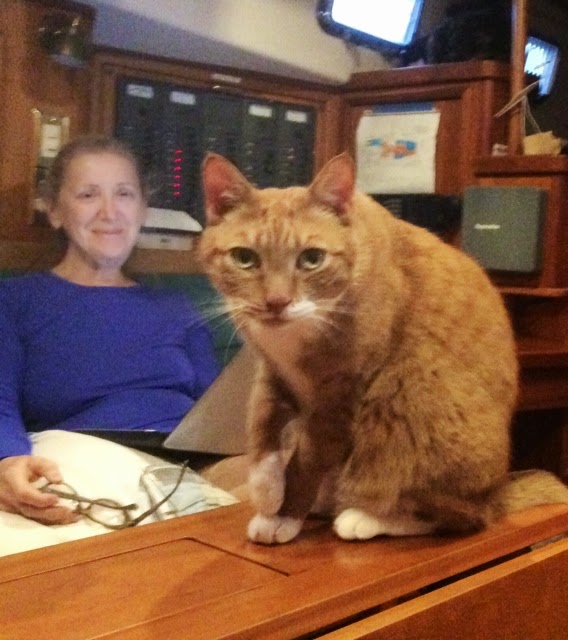Photo taken from an online article on the Rockville Regatta from The Post and Courier.

The previous header photo is of the Sea Island One-Design, a local class of large scows centered around the lowcountry South Carolina, specifically Bohicket Creek, Rockville. The 1948 design is attributed to New England naval architect, Henry Scheel but the lineage goes much farther back.
A sailing competition had started with two boats in 1890 and by the turn of the century the Rockville Regatta had quickly became a sailing contest between the towns that dotted these winding estuary fingers south of Charleston. (The Rockville Regatta also became the summer social event of the year with dances, parties, and romancing; a tradition which continues to this day, though considerably in excess - think the infield of the Kentucky Derby.) The scow shape came to the fore in the competition and Walter Eugene Townshend with his nephew, Oliver Seabrook, managed to walk off with many of the Rockville Regatta trophies sailing their series of scows named Undine.
From the book Rockville by Alicia Anderson Thompson:

A scan from a sidebar article in Sailing World. The fleet has grown to nine with the addition of a new build in 2011.

There is a strong similarity of some of these pre-WWII South Carolina scows to the 1899 Charles D. Mowers Swallow scow, which was the second scow featured in The Rudders How-To-Build series. There was at least a borrowing of the general shape. Here are the sideviews of the two starting with the Swallow.

The 1931 Rockville Undine IV.

The 1947 Sea Island One-Design is a different design, though the parentage of the Swallow is very evident. The SIOD is shorter, the transom is wider and the topside panel straighter than that of the Swallow.
For more on the Mower Swallow scow, click here.
Read More..

The previous header photo is of the Sea Island One-Design, a local class of large scows centered around the lowcountry South Carolina, specifically Bohicket Creek, Rockville. The 1948 design is attributed to New England naval architect, Henry Scheel but the lineage goes much farther back.
A sailing competition had started with two boats in 1890 and by the turn of the century the Rockville Regatta had quickly became a sailing contest between the towns that dotted these winding estuary fingers south of Charleston. (The Rockville Regatta also became the summer social event of the year with dances, parties, and romancing; a tradition which continues to this day, though considerably in excess - think the infield of the Kentucky Derby.) The scow shape came to the fore in the competition and Walter Eugene Townshend with his nephew, Oliver Seabrook, managed to walk off with many of the Rockville Regatta trophies sailing their series of scows named Undine.
From the book Rockville by Alicia Anderson Thompson:
"In 1947, Ollie Seabrook took the best features of three of the fastest and best sailing scows and gave them to Henry A. Scheel in Mystic, Connecticut, for him to create a set of plans that each island club could use to build a uniform sailboat. This three man scow was named Sea Island One Design, and it united the area yacht clubs, allowing for equal competition among the members to this day"

A scan from a sidebar article in Sailing World. The fleet has grown to nine with the addition of a new build in 2011.

There is a strong similarity of some of these pre-WWII South Carolina scows to the 1899 Charles D. Mowers Swallow scow, which was the second scow featured in The Rudders How-To-Build series. There was at least a borrowing of the general shape. Here are the sideviews of the two starting with the Swallow.

The 1931 Rockville Undine IV.

The 1947 Sea Island One-Design is a different design, though the parentage of the Swallow is very evident. The SIOD is shorter, the transom is wider and the topside panel straighter than that of the Swallow.
For more on the Mower Swallow scow, click here.




















































